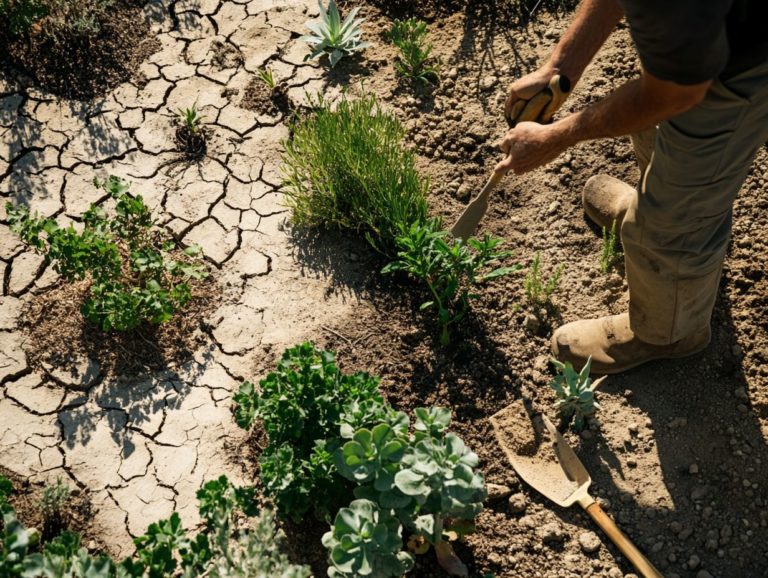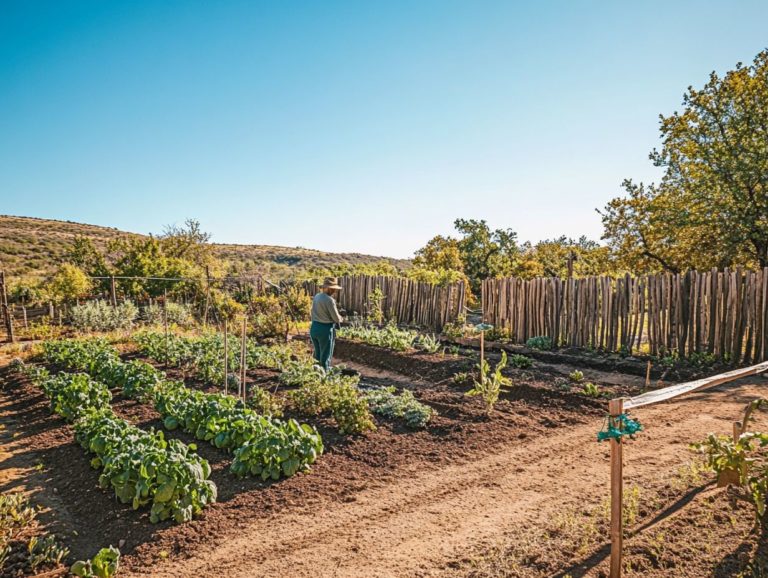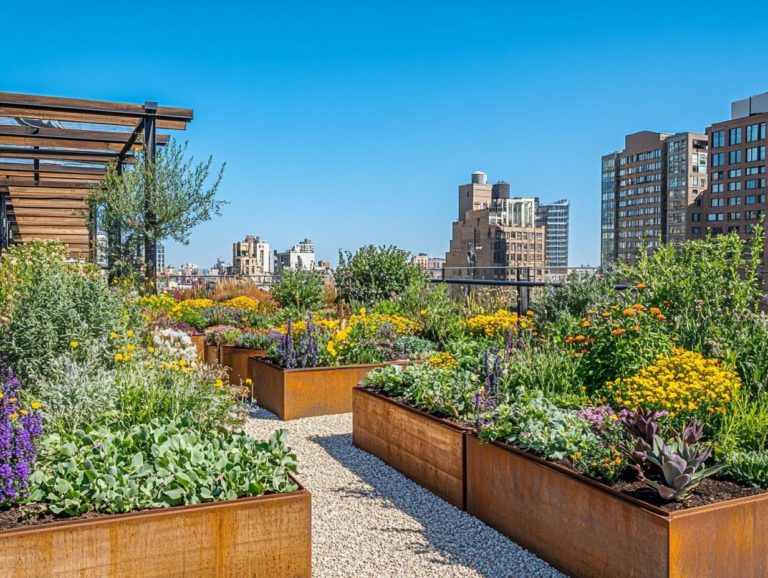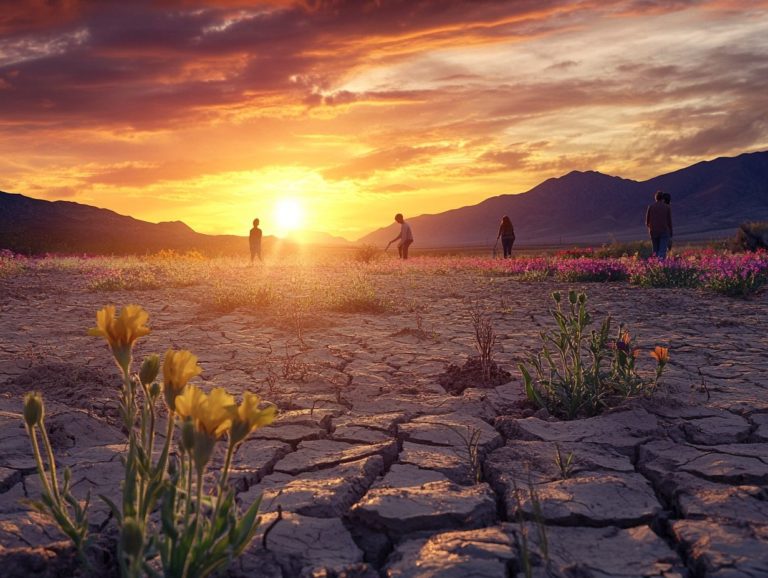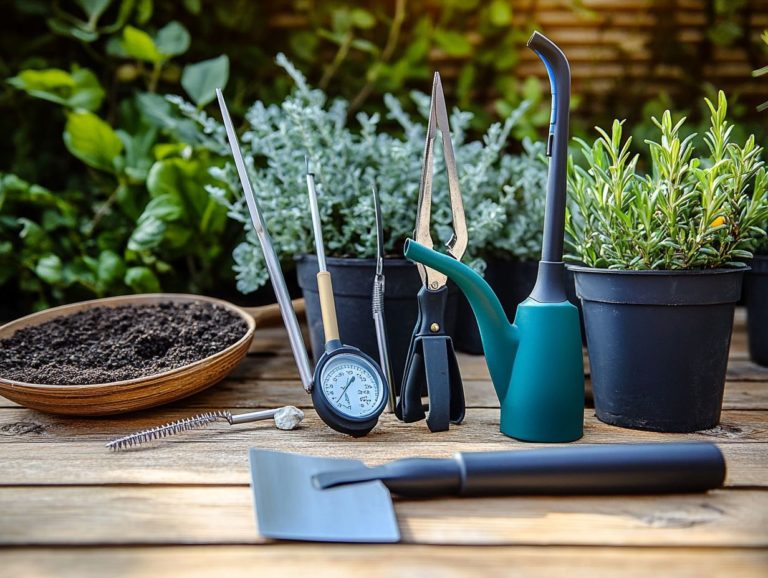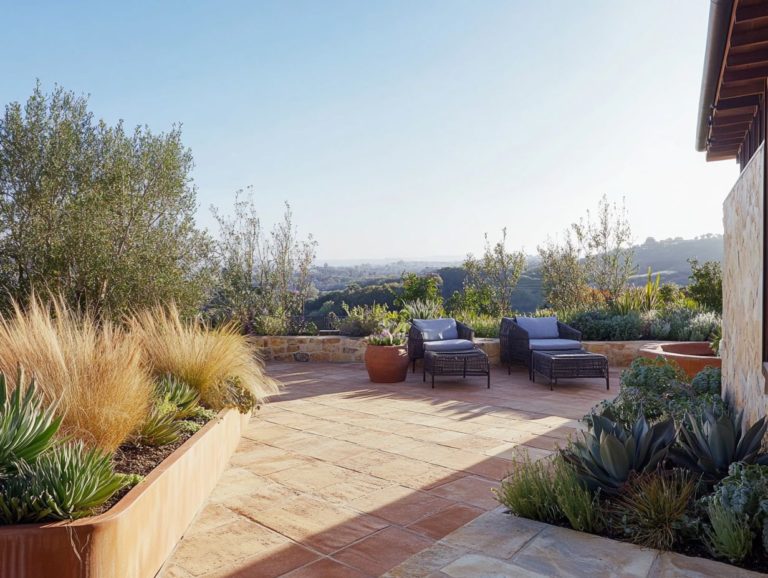Using Native Plants in Drought Landscapes
Drought landscapes might appear barren at first glance, but they possess incredible potential for beauty and sustainability.
By incorporating native plants, you can cultivate stunning, resilient environments that thrive in low-water conditions while supporting local ecosystems. Get ready to discover the amazing benefits of using native plants! This article will guide you through their environmental and aesthetic advantages. You ll learn how to select the right species and gain practical tips for designing a drought-resistant landscape.
We ll also clear up common misconceptions to empower you in making informed choices. Start transforming your outdoor space today into a vibrant, sustainable oasis.
Contents
- Key Takeaways:
- Benefits of Using Native Plants in Drought Landscapes
- Choosing Native Plants for Drought Landscapes
- Designing a Drought-Resistant Landscape with Native Plants
- Common Misconceptions About Native Plants and Drought Landscapes
- Frequently Asked Questions
- What are the benefits of using native plants in drought landscapes?
- Can I use any native plant in a drought landscape?
- How often do I need to water native plants in a drought landscape?
- Do I need to add fertilizer to my drought landscape with native plants?
- How do I maintain my drought landscape with native plants?
- Can I incorporate non-native plants in my drought landscape?
Key Takeaways:
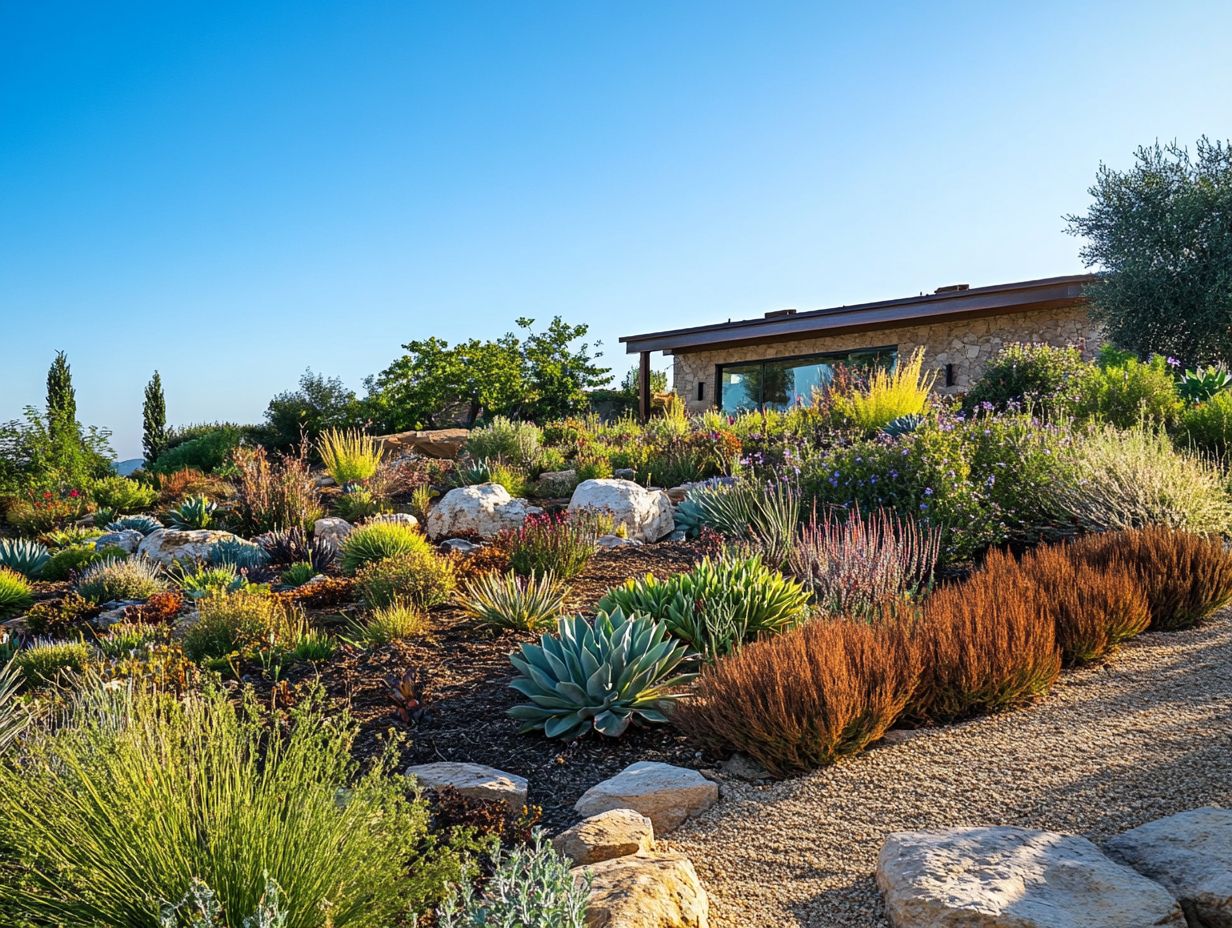
- Native plants in drought landscapes offer both environmental and aesthetic benefits, making them a smart choice for sustainable and beautiful outdoor spaces.
- When choosing native plants for a drought landscape, consider factors like soil type and sun exposure, along with popular options such as succulents, cacti, and wildflowers.
- Designing a drought-resistant landscape with native plants requires careful planning, water conservation techniques, and regular maintenance to ensure long-term success.
Defining Drought Landscapes and Their Benefits
Drought landscapes, especially in areas like Spokane, are crafted to enhance aesthetic appeal while minimizing water consumption and promoting ecological health.
By integrating drought-tolerant plants and efficient irrigation systems, these landscapes not only contribute to water conservation but also reduce maintenance efforts, encouraging environmental stewardship among homeowners.
Through eco-friendly landscaping methods, they cultivate a vibrant ecosystem that supports local wildlife and pollinators.
You ll often find native plants flourishing in these arid landscapes, thriving without the need for excessive care. This choice not only boosts biodiversity but also stabilizes local soil, effectively preventing erosion.
Incorporating water management strategies, like rain gardens which are designed to capture and use rainwater and permeable surfaces, further optimizes water usage, creating a sustainable landscaping approach.
The advantages of drought landscapes go well beyond mere aesthetics; they play a crucial role in mitigating urban heat, enhancing air quality, and providing essential habitats for pollinators.
In the broader context of climate change, these landscapes become invaluable assets in the ongoing battle for a healthier planet.
Benefits of Using Native Plants in Drought Landscapes
Utilizing native plants in drought landscapes presents remarkable benefits for both the environment and homeowners in Spokane. These plants foster sustainability while elevating aesthetic appeal.
Native plants are naturally adapted to local conditions, requiring less water and maintenance. This significantly reduces water consumption and champions water conservation efforts, making your landscaping choices both beautiful and environmentally responsible.
Environmental and Aesthetic Benefits
The environmental and aesthetic advantages of native and drought-tolerant plants are truly remarkable. They enhance both biodiversity and visual appeal in drought-prone areas.
By incorporating these species into your gardens and public spaces, you cultivate a thriving ecosystem that supports various forms of wildlife. The vibrant blooms draw in bees, butterflies, and other beneficial insects, ensuring a vital pollination process that sustains both plant life and your local food sources.
The diverse textures and striking colors of these plants create visually pleasing environments, inviting you to connect with nature. This harmonious interplay between ecological function and aesthetic enjoyment elevates your landscape while promoting awareness of sustainable gardening practices.
It encourages you and your community to embrace environmentally friendly choices that benefit everyone.
Choosing Native Plants for Drought Landscapes
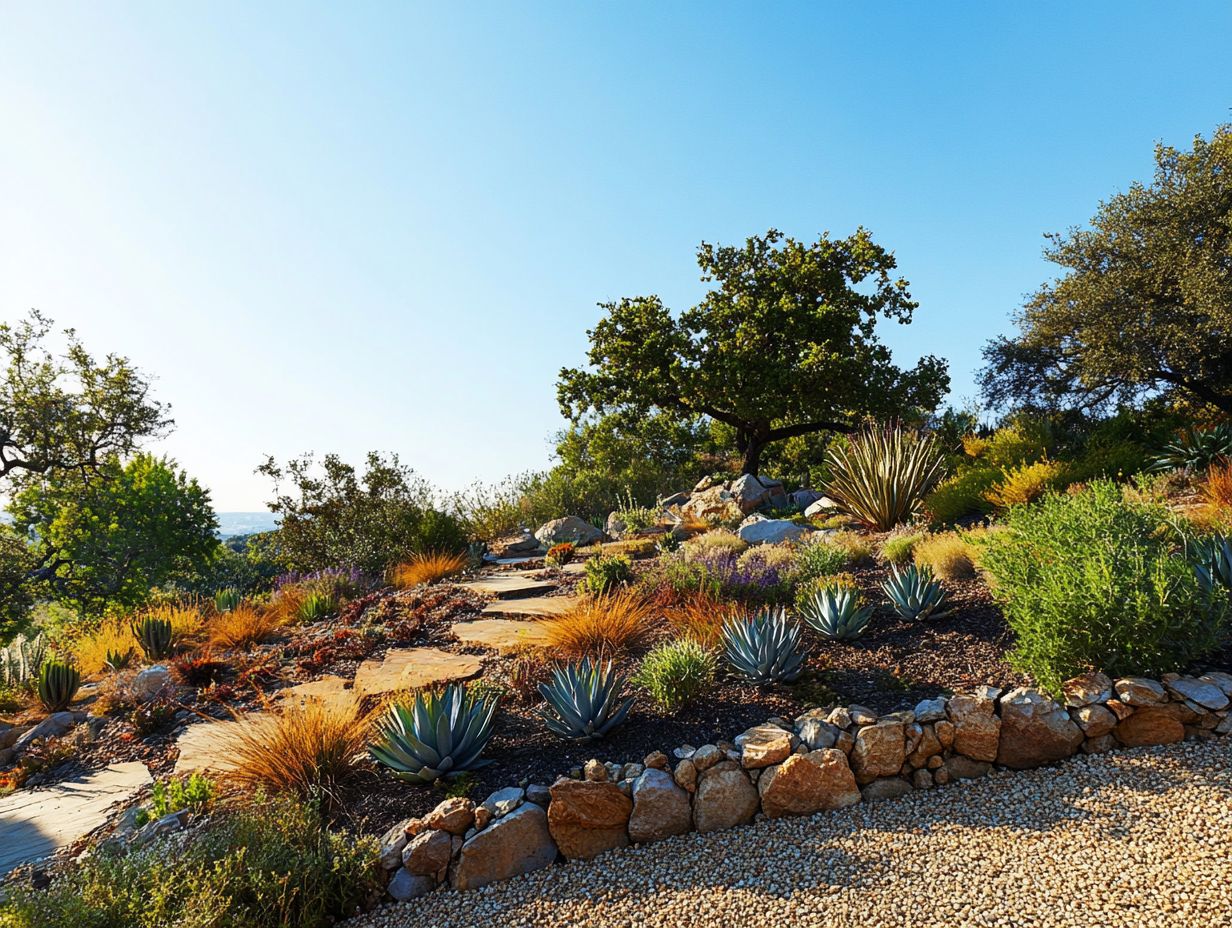
Choosing native plants for drought-resistant landscapes is essential for promoting ecological harmony, and incorporating water features in drought-tolerant landscapes can enhance this balance.
It also enhances sustainability. As a Spokane homeowner, you should consider factors like soil moisture and the growth period of the plants.
This thoughtful approach will lead you to a vibrant and thriving landscape that harmonizes beautifully with nature.
Factors to Consider and Popular Options
When selecting native plants, consider key factors such as climate adaptability, drought tolerance, and maintenance requirements. Popular choices like Agave, Penstemon, and Gambel Oak flourish in arid conditions while adding both beauty and functionality to your landscape design.
Also consider soil types and sunlight exposure to ensure your chosen plants will thrive. Taking the needs of local wildlife into account can lead to a more harmonious ecosystem. For example, selecting plants that attract pollinators enhances biodiversity in your space.
Native plants like the delicate Desert Marigold and the resilient Red Yucca infuse vibrant colors into your outdoor area and demand minimal watering once established. Choose plants that thrive in your area to create stunning and sustainable landscapes.
Designing a Drought-Resistant Landscape with Native Plants
Designing a drought-resistant landscape with native plants requires a thoughtful approach and a solid understanding of water-saving gardening techniques for drought. This ensures you create an outdoor space that is not only efficient but also aesthetically pleasing.
By incorporating effective irrigation systems, such as drip irrigation and rainwater harvesting, you can dramatically reduce water usage while fostering robust plant growth.
Tips for Water Conservation and Maintenance
Implementing effective water conservation tips and maintenance strategies is crucial for the success of your drought-resistant landscape, especially in Spokane. Here are some effective tips for conserving water and maintaining your garden:
- Start by applying a generous layer of organic mulch around your plants. This helps retain moisture, suppresses weeds, and enriches the soil over time.
- Regularly check soil moisture levels to determine when irrigation is necessary, helping to prevent overwatering and encouraging deeper root growth.
- Opt for efficient irrigation strategies like drip systems or soaker hoses for targeted watering that minimizes waste.
- Water during the early morning or late evening to reduce evaporation.
By adopting these practical techniques, you can create a sustainable landscape that makes the best use of your limited water resources.
Common Misconceptions About Native Plants and Drought Landscapes
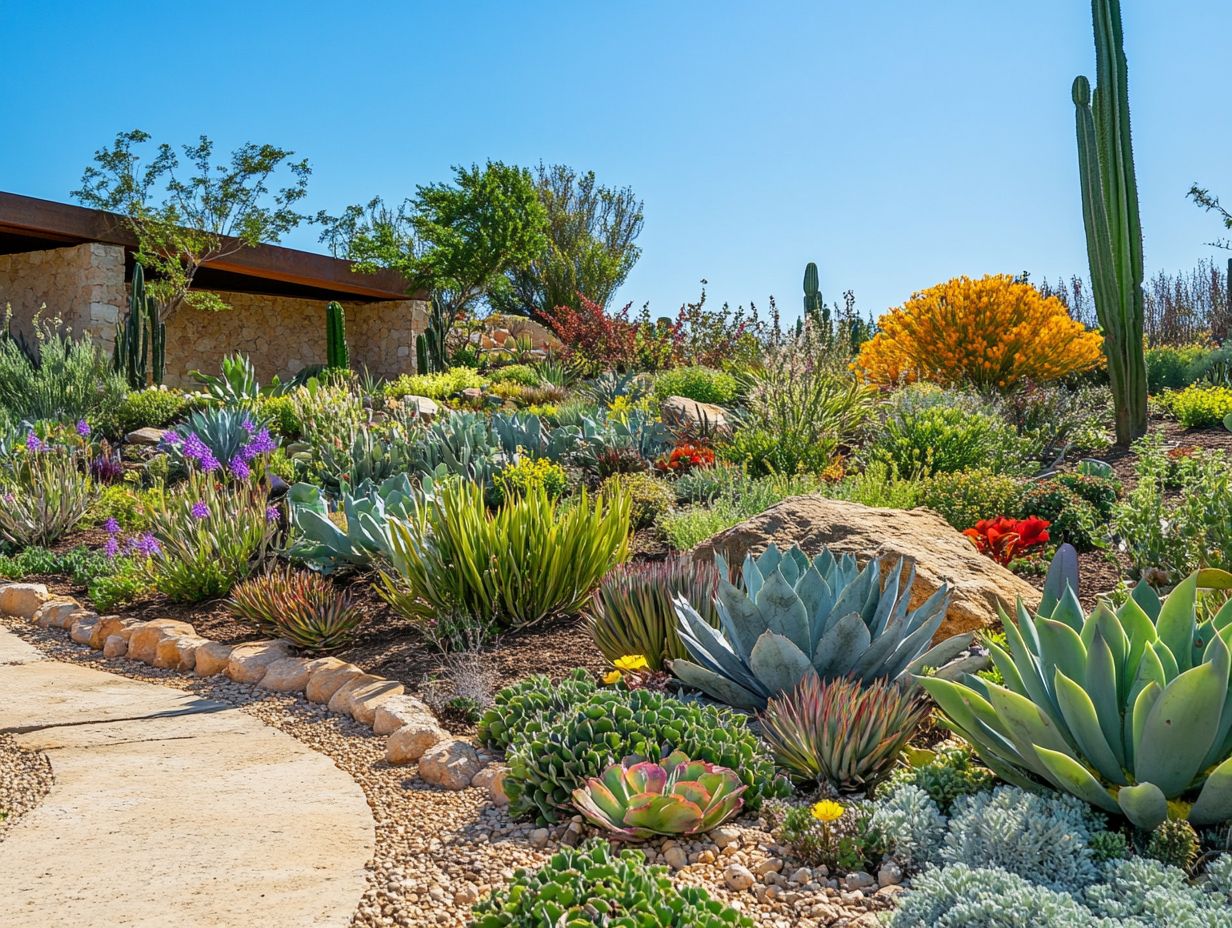
You may encounter several misconceptions about native plants and drought landscapes that could hold you back from embracing these sustainable options for your Spokane home. It s easy to think that native plants demand high maintenance or lack visual appeal, but the truth is often quite the contrary.
In fact, these plants typically thrive with minimal care and play a vital role in maintaining ecological balance, making them both beautiful and beneficial for your landscape.
Don’t miss out on transforming your home into a lush, eco-friendly paradise!
Debunking Myths and Addressing Concerns
Debunking myths and addressing concerns about native plants in drought landscapes is essential for promoting effective water management and environmental stewardship. You might be worried that native plants lack the charm of traditional landscaping. In reality, they present a stunning array of colors and textures that create breathtaking visual displays.
These resilient plants are perfectly adapted to thrive in low-water conditions, which means they demand significantly less maintenance once they re established. While some may believe that native plants appear too wild or unkempt, they can be thoughtfully designed to suit various aesthetics. This enhances your curb appeal while conserving precious resources.
Incorporating native plants also supports local wildlife and improves soil health. Moreover, they reduce reliance on chemical fertilizers. If you re considering a more sustainable garden, embracing native species offers a beautiful and practical solution that aligns seamlessly with drought mitigation efforts.
Frequently Asked Questions
What are the benefits of using native plants in drought landscapes?
Using native plants in drought landscapes has several benefits, including reduced water usage, lower maintenance requirements, and increased biodiversity. Understanding the importance of native plants in drought areas reveals that these plants are adapted to the local climate and soil, making them more resilient and requiring less watering. They also attract and support native wildlife, creating a more diverse ecosystem.
Can I use any native plant in a drought landscape?
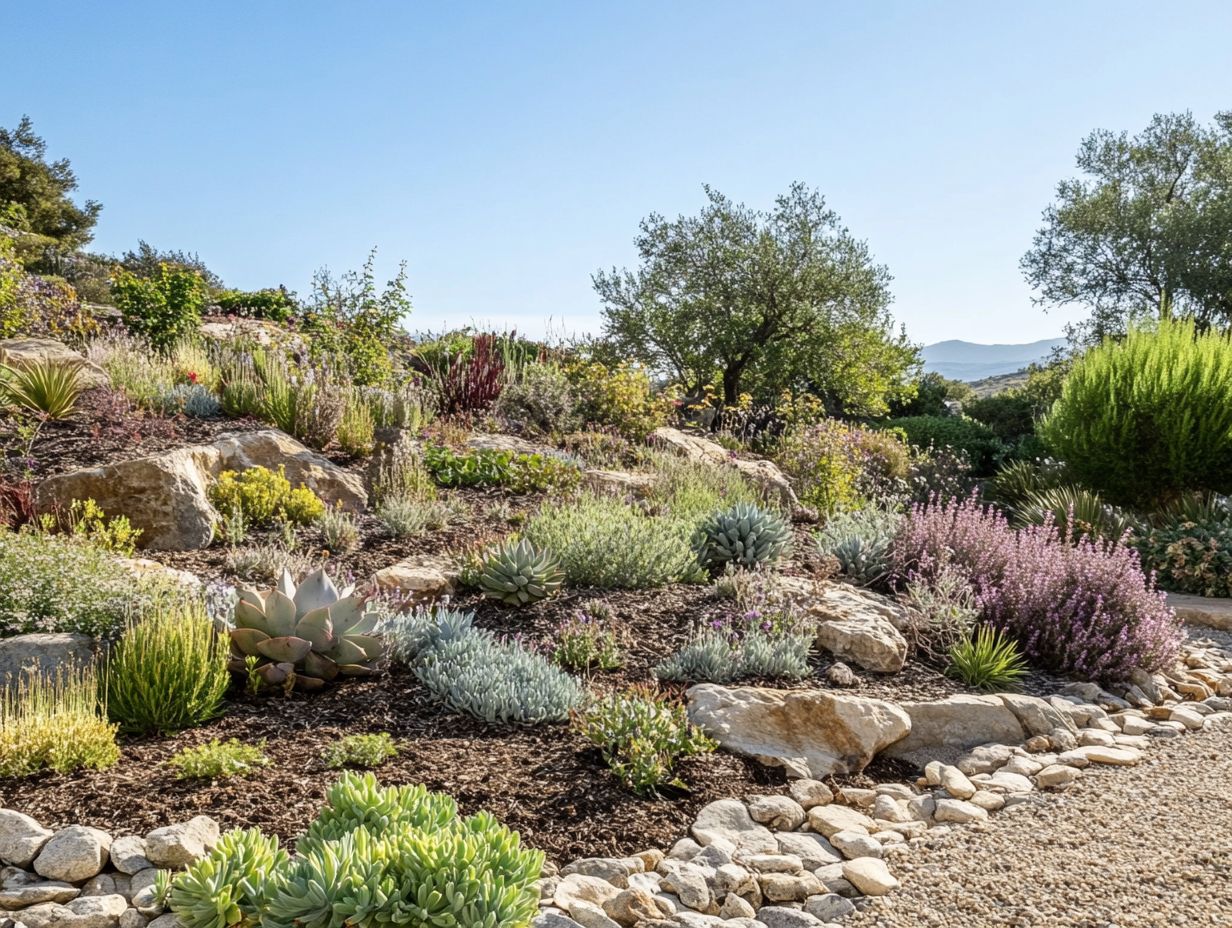
Not all native plants are suitable for drought landscapes. It is important to select plants that are specifically adapted to drought conditions and can thrive with minimal water. Consulting a local gardening expert, such as Chuck Miller from WaterWise Spokane, or researching native plants in your area can help you choose the right ones for your landscape.
How often do I need to water native plants in a drought landscape?
Once established, native plants in a drought landscape typically only need to be watered once or twice a week. It is important to water deeply and infrequently, allowing the plants to develop deep root systems that can access water from lower soil levels. During periods of extreme drought, it may be necessary to water more frequently.
Act now to create your sustainable oasis! Start planning your native plant garden today!
Do I need to add fertilizer to my drought landscape with native plants?
In most cases, native plants in a drought landscape do not need extra fertilizer. They have evolved to thrive in their natural environments and get the nutrients they need from the soil.
Organic mulch can help retain moisture and create a habitat for pollinators. Using fertilizer may harm the plants and upset the natural balance of the ecosystem.
How do I maintain my drought landscape with native plants?
Maintaining a drought landscape with native plants is simple and requires little effort. Regularly remove weeds and check for pests and diseases to keep your plants healthy.
Pruning plants like Agave and Penstemon helps maintain their shape and size. Overall, native plants require less maintenance than traditional landscapes.
Can I incorporate non-native plants in my drought landscape?
While you can add non-native plants to a drought landscape, it s not advisable. These plants often need more water and maintenance, which defeats the purpose of a drought-resistant landscape.
Non-native plants may also disrupt the local ecosystem and harm native wildlife. Stick with native plants to support local habitats and conserve water.

